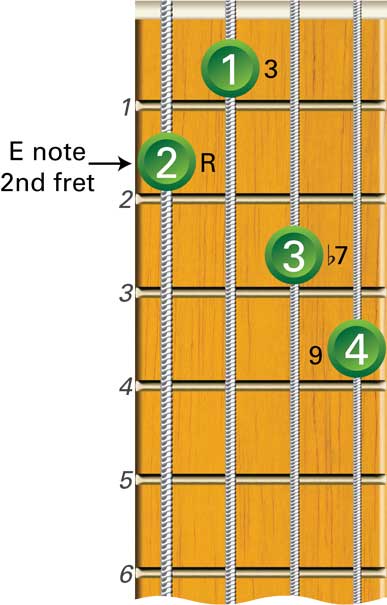
Omitting Notes From Chords
The more notes you add to chords, the more difficult they are to play and the more muddy they can sound. For this reason it is common to omit notes from extended chords, keeping only those notes which most clearly indicate the quality (sound) of the chord. The most frequently omitted note is the 5th, although sometimes the 3rd or the root can be omitted. Usually the bass will be playing the root note anyway. With a dominant 7th chord, as long as the b7 degree is in the chord you still get the effect of a 7th chord. With a dominant 9th chord, as long as you have the 3rd, b7th and 9th, you have the effect of a 9th chord, etc. This is demonstrated here with an E Ninth chord.
Dominant Ninth Chord Formula



Because the banjo has only four or five strings, it is difficult to play this chord with the notes in the order of the formula. All players rearrange and omit notes when playing extended chords. It is good to work out voicings for yourself, as this will improve your theoretical knowledge, your musical knowledge and your ear.
However, through the years certain voicings have become standard because they clearly indicate the chord type and they sound good. The following diagrams show two commonly used E9 chord shapes which have the 5th omitted. Play each shape first as a whole chord and then as an arpeggio, and listen to the effect produced by each degree of the chord. The sound of a 9th chord is clear and unambiguous. There is no necessity for the 5th degree in either voicing. This principle can be applied to all extended chords.
E9

E9

Major Ninth

